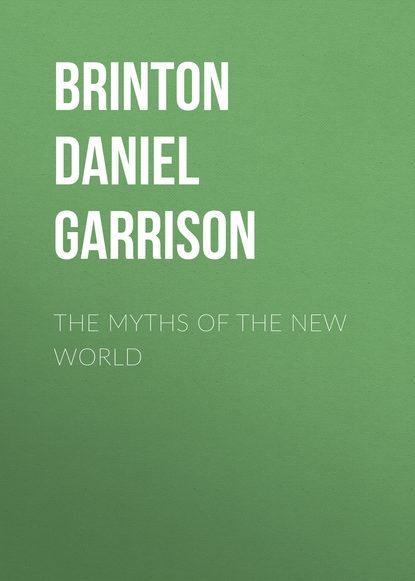По всем вопросам обращайтесь на: info@litportal.ru
(©) 2003-2024.
✖
The Myths of the New World
Настройки чтения
Размер шрифта
Высота строк
Поля
Hist. des Incas, liv. ii. cap. 28, and corrected in Markham’s Quichua Grammar.
230
The latter is a compound of tici or ticcu, a vase, and ylla, the root of yllani, to shine, yllapantac, it thunders and lightens. The former is from tici and cun or con, whence by reduplication cun-un-un-an, it thunders. From cun and tura, brother, is probably derived cuntur, the condor, the flying thunder-cloud being looked upon as a great bird also. Dr. Waitz has pointed out that the Araucanians call by the title con, the messenger who summons their chieftains to a general council.
231
Le Livre Sacré, p. 9. The name of the lightning in Quiché is cak ul ha, literally, “fire coming from water.”
232
Morgan, League of the Iroquois, p. 158.
233
“El rayo, el relámpago, y el trueno.” Gama, Des. de las dos Piedras, etc., ii. p. 76: Mexico, 1832.
234
Torquemada, Monarquia Indiana, lib. vi. cap. 23. Gama, ubi sup. ii. 76, 77.
235
Torquemada, ibid., lib. vi. cap. 41.
236
Senate Report on the Indian Tribes, p. 358: Washington, 1867.
237
Brasseur, Histdu Mexique, i. p. 201, and on the extent of his worship Waitz, Anthropol., iv. p. 144.
238
Oviedo, Hist. du Nicaragua, p. 47.
239
The meda worship is the ordinary religious ritual of the Algonkins. It consists chiefly in exhibitions of legerdemain, and in conjuring and exorcising demons. A jossakeed is an inspired prophet who derives his power directly from the higher spirits, and not as the medawin, by instruction and practice.
240
For these particulars see the Rel. de la Nouv. France, 1667, p. 12, 1670, p. 93; Charlevoix, Journal Historique, p. 344; Schoolcraft, Indian Tribes, v. pp. 420 sqq., and Alex. Henry, Travs. in Canada and the Ind. Territories, pp. 212 sqq. These are decidedly the best references of the many that could be furnished. Peter Jones’ History of the Ojibway Indians, p. 35, may also be consulted.
241
Science of Language, Second Series, p. 518.
242
Dialectic forms in Algonkin for white, are wabi, wape, wompi, waubish, oppai; for morning, wapan, wapaneh, opah; for east, wapa, waubun, waubamo; for dawn, wapa, waubun; for day, wompan, oppan; for light, oppung; and many others similar. In the Abnaki dialect, wanbighen, it is white, is the customary idiom to express the breaking of the day (Vetromile, The Abnakis and their History, p. 27: New York, 1866). The loss in composition of the vowel sound represented by the English w, and in the French writers by the figure 8, is supported by frequent analogy.
243
Schoolcraft, Algic Researches, i. pp. 135-142.
244
The names of the four brothers, Wabun, Kabun, Kabibonokka, and Shawano, express in Algonkin both the cardinal points and the winds which blow from them. In another version of the legend, first reported by Father De Smet and quoted by Schoolcraft without acknowledgment, they are Nanaboojoo, Chipiapoos, Wabosso, and Chakekenapok. See for the support of the text, Schoolcraft, Algic Res., ii. p. 214; De Smet, Oregon Missions, p. 347.
245
Narrative of John Tanner, p. 351.
246
Schoolcraft, Algic Res., i. p. 216.
247
Narrative of John Tanner, p. 354.
248
Compare the Rel. de la Nouv. France, 1634 p. 14, 1637, p. 46, with Schoolcraft, Ind. Tribes, v. p. 419. Kichigouai is the same word as Gizhigooke, according to a different orthography.
249
The names I8skeha and Ta8iscara I venture to identify with the Oneida owisske or owiska, white, and tetiucalas (tyokaras, tewhgarlars, Mohawk), dark or darkness. The prefix i to owisske is the impersonal third person singular; the suffix ha gives a future sense, so that i-owisske-ha or iouskeha means “it is going to become white.” Brebeuf gives a similar example of gaon, old; a-gaon-ha, il va devenir vieux (Rel. Nouv. France, 1636, p. 99). But “it is going to become white,” meant to the Iroquois that the dawn was about to appear, just as wanbighen, it is white, did to the Abnakis (see note on page 166), and as the Eskimos say, kau ma wok, it is white, to express that it is daylight (Richardson’s Vocab. of Labrador Eskimo in his Arctic Expedition). Therefore, that Ioskeha is an impersonation of the light of the dawn admits of no dispute.
250
The orthography of Brebeuf is aataentsic. This may be analyzed as follows: root aouen, water; prefix at, il y a quelque chose là dedans; ataouen, se baigner; from which comes the form ataouensere. (See Bruyas, Rad. Verb. Iroquæor., pp. 30, 31.) Here again the mythological role of the moon as the goddess of water comes distinctly to light.
251
This offers an instance of the uniformity which prevailed in symbolism in the New World. The Aztecs adored the goddess of water under the figure of a frog carved from a single emerald; or of human form, but holding in her hand the leaf of a water lily ornamented with frogs. (Brasseur, Hist. du Mexique, i. p. 324.)
252
Rel. de la Nouv. France, 1636, p. 101.
253
Rel. de la Nouv. France, 1671, p. 17. Cusic spells it Tarenyawagon, and translates it Holder of the Heavens. But the name is evidently a compound of garonhia, sky, softened in the Onondaga dialect to taronhia (see Gallatin’s Vocabs. under the word sky), and wagin, I come.
254











